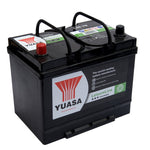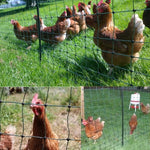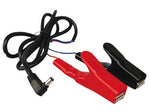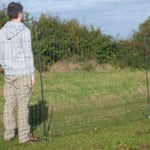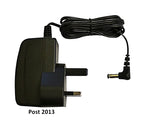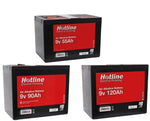You have no items in your shopping cart.
Energiser Terminology
ELECTRICAL TERMINOLOGY USED IN EVALUATING ELECTRIC FENCING ENERGISERS
Since electricity is not something that can be seen, it is difficult for many people to understand how it works, the following terms are often used to evaluate and compare energiser units.
Volts: Volts are a unit of measurement used to describe an amount of electrical potential, or "pressure". The higher the voltage-the higher the pressure. In an electric fence system, a high voltage is important for making sure that an electrical charge can find its way through the hair on the animals it is intended on either keeping in or out. The more or thicker the hair, the greater the voltage required. For most animals, the optimal voltage range is generally considered to be between 5000 and 7000 volts. Voltages greater than this are not normally necessary or recommended and there are many animal species that are adequately controlled with less.
Amps: Amps are a measure of the "ability to do work" of electricity that flows through the circuit (remember, electricity will not flow unless a circuit is being completed). It is amperage, not voltage that causes the greatest amount of numbing pain when anything receives a shock. Electric fencing energisers typically run at very low amperages, 15 - 500 millamps for most applications and varies with the joule rating. This can go higher with the 15-20 joule rated energisers. Compare this with standard mains electricity that runs at 13-15 amps (13000 - 15000 milliAmps). It is high amperage that creates heat and melts wires in houses and barns when more electricity is being carried than they are intended to handle - normally when there is a short circuit. The reason that circuit breakers and fuses are put in electrical systems is to prevent an excessive flow of energy from being pulled through the circuit and heating up whatever it runs through.
Pulse Duration and Frequency These are seldom quoted but form the basis of the Joule calculation. This determines how frequent the pulse of electricity is sent down the line. In the majority of cases it is once per second - however many energisers have a "Power saving function" This basically revolves around extending the pulse frequency to once every 2 seconds thus halving the Joule calculation. The pulse duration is important in the calculation and in the safety of the overall installation. It is this interupted feature that allows a shocked animal to withdraw safely from a fence. This figure varies widely but is most often in the region of 0.0003 of a second long - very short pulses.
Watts: Watts are a measure of the electrical rate of doing work. It is a unit of electrical power, which is very similar to horsepower and is calculated by the equation: amps x volts = watts. The term "watt" is not used much in discussions about energisers, but the definition of a watt is important in understanding the next unit of measure that is often used when comparing energisers, the joule.
Joules: A joule is a unit of electrical energy equalling the amount of energy required to produce one watt for one second. The equation is: watts x seconds = joules
Low Impedance vs. High Impedance: As was mentioned previously, a high amperage electrical charge is what causes the greatest amount of damage when it flows through anything that completes a circuit. In the older, conventional electric fence controllers, the pulse rate was very long, sometimes nearly half a second. If the flow of electricity is not controlled in these style of energisers, they are not only a potential source of grass fires, they can also be lethal to any animal that would become caught in the wire. This is especially true if the wire is barb wire. Manufacturers of long pulse rate energisers put in resistors which restrict the flow of current out of the energisers, thus the term "high impedance". These high impedance energisers keep the amount of amperage down to a safe level but also make them more prone to shorting out.
Low impedance energisers, don't want to restrict the volume of electricity to the extent the older style energisers do. They depend on the extremely high energy discharge and short pulse rate to keep an electric fence from being easily shorted out. It is the millisecond pulse rate that provides the safety factor in "low impedance" energisers. The vast majority of modern energisers are of the Low Impedance version.
Miles of fence: The standard of "Miles of Fence" in describing the power of a fence controller has been in use for many years. Although many companies still use this standard in evaluating their energisers, a unit which is rated as a fifty mile unit only means that it can effectively power 50 miles of a weed free, properly insulated, single strand of 12 gauge solid strand wire (which has a very low resistance) that is 30 to 36 inches off the ground. It does not take into consideration the weed loading or the electromagnetic resistance that occurs in multiple wire fences. A 50 mile energiser will not necessarily power 10 miles of five wire high tensile fence. Although an energiser rated in "Miles of Fence" may be as good as a unit rated in joules, it is difficult to make a fair comparison using this method of rating. It is also vital to appreciate that the general fence WILL NOT operate to these specifications.
No fencing system containing barb wire should ever be electrified. An owner of such a fence would be considered liable if any animal or person were to be caught up in such a fence. In order to reduce the chances of injury or property damage,

